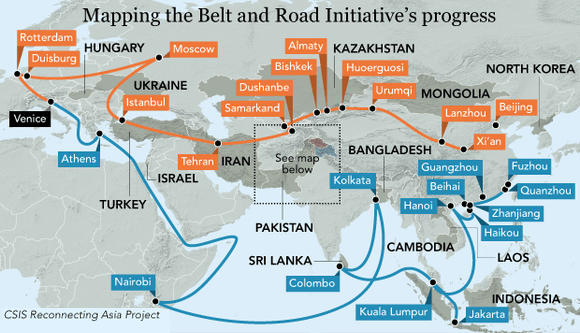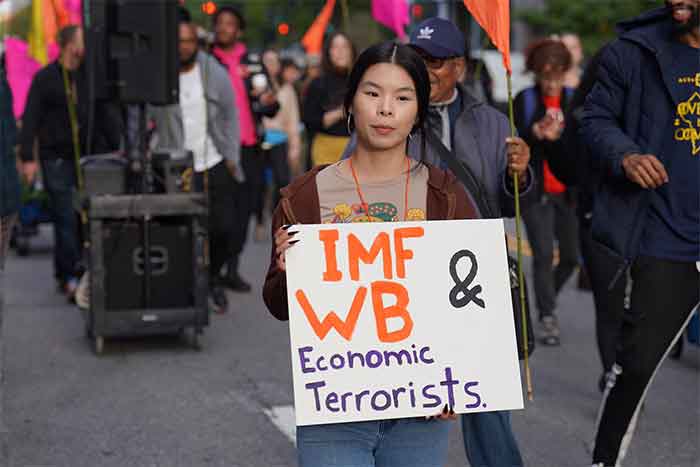
Ajay Banga made history by becoming the first Indian American to hold the position of President of the World Bank. Banga took charge of the institution on May 3rd, succeeding David Malpass, who announced his departure in February. Malpass announced his resignation in early 2023, after massive public backlash on his press statements despite having only a year left in his five-year term.
Banga’s appointment as president of the institution is to signify a change in direction for the World Bank, after all of the negative publicity and backlash they have faced from climate activists around the world during Malpass’s tenure as president. The World Bank has promised the world better hopes for improved climate action through the newly appointed president. However, it is to be addressed whether the very mission of the World Bank must be revised, and authorities kept in check to improve accountability and action from the so-called developed countries.
In a memo addressed to the World Bank staff, the newly appointed President, Ajay Banga, expressed his vision of improving efficiency within the bank, particularly in the approval process for financing projects, which currently can take up to three years. He also aims to optimize the bank’s financial resources and engage more private capital.
The World Bank was established to promote global economic development as part of the post-World War II reconstruction efforts. The International Bank for Reconstruction and Development (IBRD), the predecessor to the World Bank, was originally created to support reconstruction and development in war-affected or less-developed regions. However, its Articles of Agreement did not initially include provisions for sustainable development or environmental protection. In 1987, the World Bank introduced safeguard policies to prevent harm to people and the environment during development projects. This marked the institution’s recognition of sustainable development and led to the establishment of an environment department and the implementation of environmental projects.
Despite these developments, there are concerns about the World Bank’s effectiveness in handling environmental issues. Critics, particularly environmentalists, point to past projects by the World Bank in the 1970s and 1980s that had negative ecological impacts, such as deforestation, destruction of coastal ecosystems, and soil degradation. The adoption of safeguard policies in 1987 did not completely prevent the World Bank’s involvement in environmentally controversial projects.
In more recent times, the Global Environment Facility (GEF) funds, which operate with the backing of the World Bank, were utilized to support carbon-intensive projects. One notable instance involved a $45 million GEF contribution to a project aimed at extending the lifespan and modernizing several coal plants in India. Additionally, starting in 2000, donor countries entrusted the World Bank with additional contributions for carbon funds. These funds were intended to stimulate international carbon offset trading through the Kyoto Protocol’s Clean Development Mechanism and facilitate carbon trading for forest offsets in developing countries not covered by the Kyoto Protocol.
By 2011, the World Bank claimed to be managing more than $3 billion across 13 different carbon funds. However, during the same period, the World Bank Group heavily invested in coal projects. Between 2008 and 2010, it provided $6.75 billion in loans for coal plants and related infrastructure in countries such as the Philippines, Chile, Botswana, India, and South Africa. The World Bank Group’s involvement in these investments played a significant role in attracting additional funding from other public and private financial institutions and banks, amounting to tens of billions of dollars.
A legacy of contradiction is created as the World Bank Group has been investing heavily in climate change mitigation and adaptation projects in developing countries. As the largest multilateral funder of climate investments, the bank has made significant financial contributions to reduce poverty and promote sustainable development. One notable investment was an $11 billion package for climate adaptation and resilience in Sub-Saharan Africa in 2018. Additionally, the World Bank Group’s Climate Change Action Plan prioritizes the funding of projects that tackle mitigation and adaptation with a focus on supporting countries with their Nationally Determined Contributions and Long-term Strategies. The bank’s spending priorities are focused on promoting sustainable development through various financial instruments, including partnerships and coordination efforts to pool resources from private foundations and companies looking to fulfil their net zero commitments.
Climate change is a global problem that affects everyone, but developed countries have been the primary contributors to the issue. Institutions such as the World Bank which are so deeply entrenched in the business of environmental reform remain silent on the contribution by developed nations and changes that could be made to their systems to curb climate change. These nations have been emitting greenhouse gases at an alarming rate since the Industrial Revolution, which has led to a significant increase in global temperatures, sea level rise, and extreme weather events. According to the Intergovernmental Panel on Climate Change (IPCC), developed countries are responsible for more than 70% of historical greenhouse gas emissions. The United States, the largest shareholder in the World Bank, alone has contributed over 25% of global emissions.
The primary reason for developed countries’ high carbon footprint is their reliance on fossil fuels for energy production, transportation, and industrial processes. These countries have been burning coal, oil, and gas to power their economies for decades, which has led to the accumulation of carbon dioxide and other greenhouse gases in the atmosphere. Furthermore, developed countries’ consumption patterns are generally more carbon-intensive than those of developing countries.
During David Malpass’s tenure as president, The World Bank created history as the world’s largest financier of climate action in developing countries, providing over $31.7 billion in the fiscal year 2022. Despite these record-breaking figures, there is no visible significant improvement in the state of climate change, and yet the institution seems to have not effectively widened its vision and created a strategy that is actually suited to the current environmental needs. The consequences of climate change are severe, and developing countries are the ones who are most vulnerable to its effects. They are already experiencing the adverse impacts of sea level rise, droughts, floods, and heat waves, which are affecting their food security, water resources, and livelihoods. However, we tend to place a heavy emphasis on the contribution of developing countries to climate change and environmental degradation. With institutions such as the World Bank being helmed by the developed world, it is easy for the spotlight to be diverted to the developing world. These institutions are also used as fronts for business deals that very clearly do not centre around the well-being of the environment.
Neha Tuheen is an undergraduate student of International Studies at FLAME University, Pune.
Email: [email protected]











































